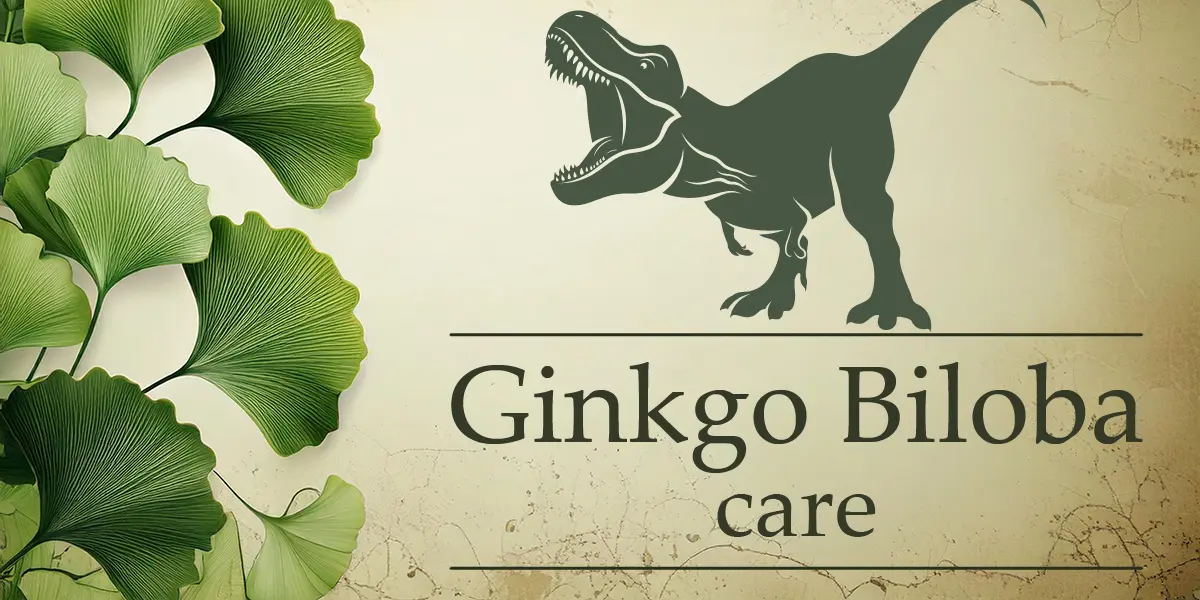The Ginkgo biloba tree is a marvel.
This living fossil has existed for over 200 million years, surviving many extinction events and earning its place as one of the hardiest plant species. The dinosaur vanished 66 million years ago, but the mighty Ginkgo soldiers on — a lasting symbol of resilience!
Native to China, the plant is incredibly adaptable and has spiritual, medicinal, and aesthetic significance. It does just as well in urban US settings as in mountainous Asian landscapes — an exceptional quality for any plant species.
Ginkgo’s leaves are processed into natural supplements for memory and brain health, and its seeds are edible when cooked.
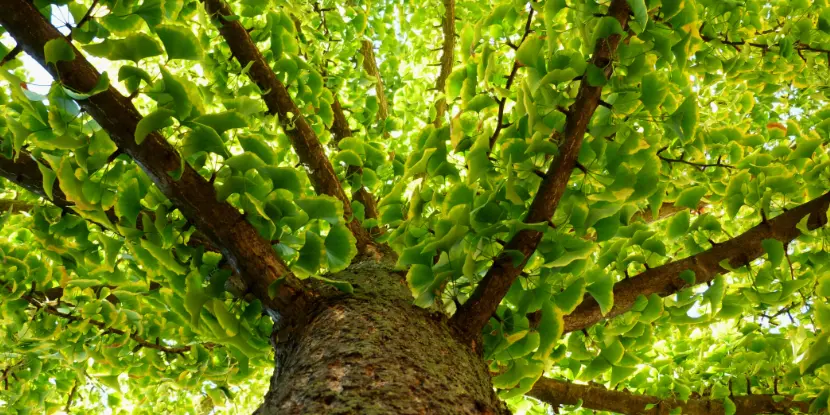
The stout trunk and sturdy branches of an old Ginkgo tree.
Ideal Growing Conditions for Ginkgo Biloba
Ginkgo biloba plants are hardy, but in the right conditions, they’ll grow into stately trees that can live for centuries.
Light
- Ginkgo biloba trees require at least 4–6 hours of direct sun daily.
- While they tolerate partial shade, their growth may slow, and foliage may not be as vibrant.
Temperature
- Ginkgo biloba does best in USDA hardiness zones 4–9. Southern California zones range from 8b to 11a (zones with high numbers have higher average temperatures).
- It can withstand cold winters and hot summers, making it one of the most temperature-tolerant trees.
Soil
- Ginkgos prefer well-draining soil. Avoid waterlogging their roots.
- They can adapt to a wide range of pH levels but thrive in slightly acidic to neutral soil (pH 6.0–7.0).

Ginkgo biloba leaves are used in natural remedies for memory and brain health.
Propagating Ginkgo Biloba
Ginkgo biloba trees can be propagated through seeds or cuttings. Both methods demand patience.
- Seeds: Collect seeds from a mature Ginkgo tree. Remove the fleshy outer layer and plant in moist, sandy soil during fall. Germination can take weeks or even months.
- Cuttings: Take softwood cuttings in summer. Dip the cuttings in rooting hormone before planting them in well-draining soil.
Steps for Planting Ginkgo Biloba
- Select a location with full sun exposure and good drainage. Give the tree ample space, as Ginkgos grow up to 80 feet tall.
- Dig a hole twice as wide as the root ball but no deeper to ensure proper settling.
- Place the sapling in the hole, spreading the roots evenly. Fill the hole with soil and gently press it down.
- After planting, water generously to help the roots establish in their new location.
- Young trees may need staking to keep them upright until their roots strengthen.
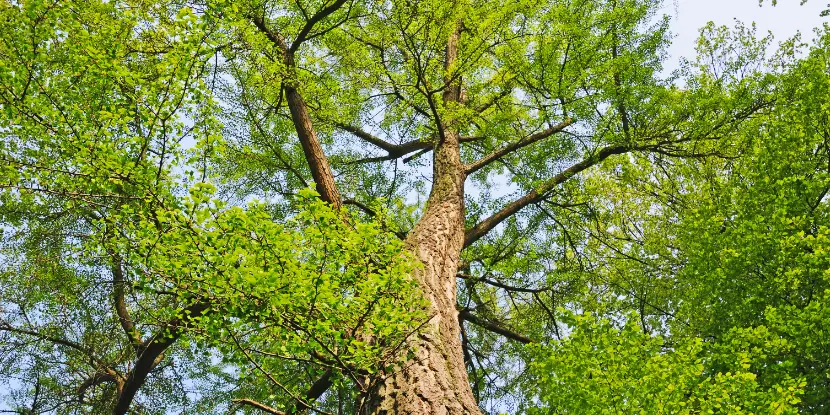
Ginkgo is a deciduous conifer that sheds its leaves all at once.
Ginkgo Biloba Tree Care
Watering
- Young Trees: Water weekly during the first one to two years to establish roots.
- Mature Trees: These are drought-tolerant but benefit from regular deep watering during prolonged dry spells.
Fertilizer
- Use a balanced, slow-release fertilizer during the growing season (spring and summer).
- Avoid over-fertilizing. Ginkgos are low-maintenance when it comes to nutrients.
Pests & Diseases
- Ginkgo biloba trees are naturally pest-resistant and rarely suffer from diseases! However, watch for root rot if overwatered.
- Their resilience makes them perfect for urban settings where pollution and pests are often problematic.
Pruning
- Prune in late winter to remove any dead or weak branches.
- Shape your tree to encourage even growth, especially when it’s young.
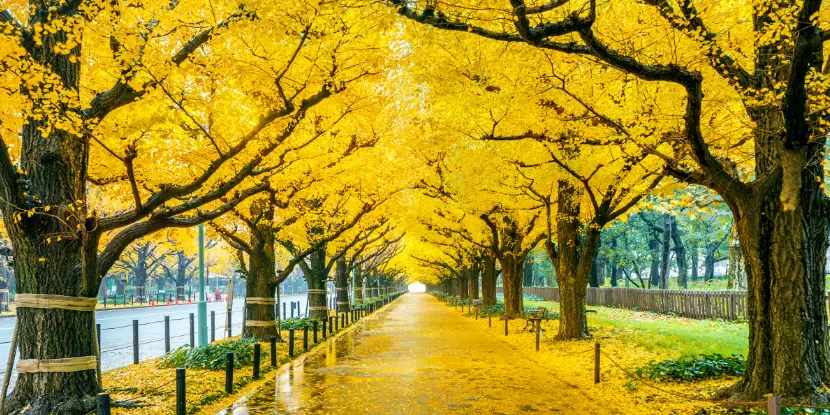
Yellow Ginkgo trees lining a park walkway in Japan.
Fall Foliage & Seasonal Changes
While Ginkgo trees are superb landscaping plants year-round, they’re famous for their brilliant fall foliage. The leaves turn a stunning golden yellow before they drop off.
Ginkgoes are deciduous conifers, shedding all their leaves at once rather than gradually like most other trees. This makes leaf raking a breeze, but it also means Ginkgoes can be messy for a short period during fall.
Putting Ginkgo Biloba to Use
Apart from their landscaping value, Ginkgo trees can be practical additions to your life:
- Their unique leaves and golden-yellow foliage make them standout ornamental trees in fall.
- They provide excellent shade due to their broad crown.
- Ginkgos are known for improving air quality by filtering pollutants.
- If you can access the proper tools, try processing the leaves into herbal remedies (consult an expert first!).
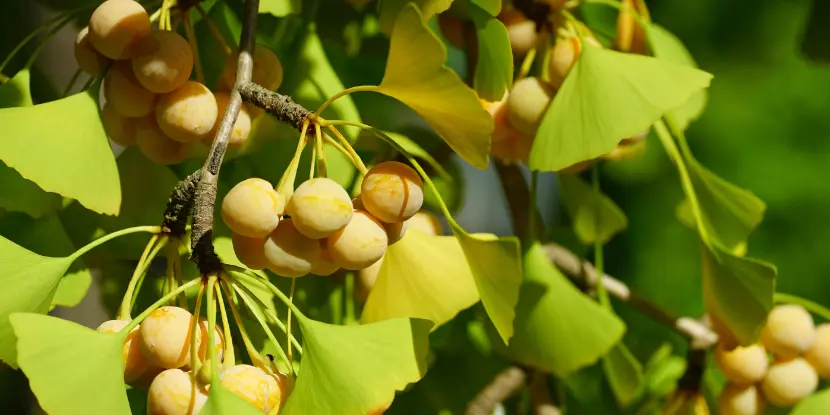
Ginkgo biloba seeds are edible when cooked, but toxic when improperly prepared.
FAQs: Ginkgo Biloba Care
Q: Can I grow Ginkgo biloba in a container?
While Ginkgos prefer open spaces, they can be grown in large containers. Be sure to prune roots regularly and provide ample sunlight.
Q: How fast does a Ginkgo tree grow?
Ginkgos are slow-growers, averaging 12–24 inches of growth annually. Once mature, their growth rate may slow further.
Q: Are Ginkgo trees messy?
Female Ginkgo trees produce seeds encased in fleshy coatings that can emit a strong odor. Opting for male cultivars solves this problem.
Q: How long do Ginkgo biloba trees live?
Ginkgos can live for more than 1,000 years, making them one of the longest-living tree species on Earth.
Q: Do Ginkgo trees require a lot of maintenance?
Once established, they require minimal watering, resist pests and diseases, and don’t need frequent fertilization. They only need occasional pruning to maintain shape and remove dead branches.
Q: When do Ginkgo trees change color?
Ginkgo trees put on a stunning display in the fall. Their leaves turn vivid golden-yellow, typically in late October to early November, depending on the climate. This color change can last for a few weeks before the leaves drop.
Q: Can Ginkgo biloba grow in poor soil?
Ginkgo biloba is adaptable to various soil types, including poor and compacted soils. While it thrives in well-draining, slightly acidic to neutral soils, it can tolerate less-than-ideal conditions as long as its roots aren’t soggy.
Q: Are Ginkgo biloba trees fire-resistant?
Yes, Ginkgo biloba trees are known for their fire resistance. Their unique bark and resilience enable them to survive and recover from fires, which adds to their reputation as durable and hardy trees.

